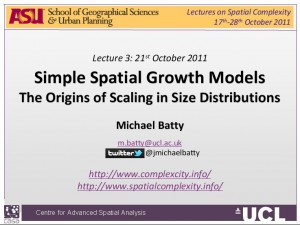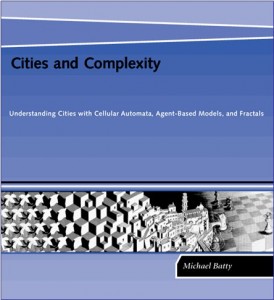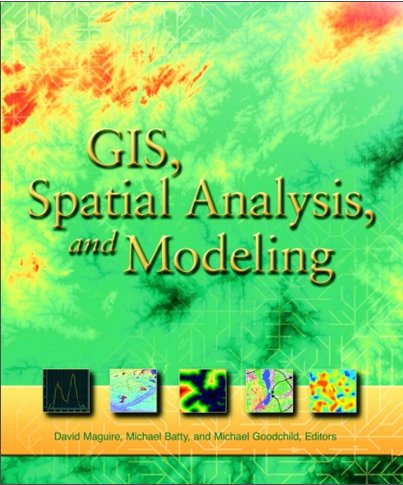The third lecture focuses on the scaling of objects of different size (rank-size, size-frequency) rather than how object change as they increase in size (allometry). We first develop a simple mathematics of scaling where we show how a frequency size distribution is transformed to a rank size. We then examine two different models for generating cities; the first spawns anew cityfrom every city in the set so far in each time period. The number of cities thus increases as 2^time and cities also grow exponentially. This model generates a rank size rule which is exponentially related. Our second model is one based on growth by proportionate effect which is like a constrained random walk. This produces a power law because it has more flexibility in that cities can go up and down in size and they are constrained to be at or above a minimum threshold. This sets the scene for an examination of empirical data and we show that Zipf’s Law which is the pure rank size rule pertains to US cities., We then look at the volatility of cities within the linear rank size envelope and illustrate various visualisations of this volatilility for world cities from 430BC to 2000, the US from 1790 to 2000 and the UK from 1901 to 2001 using ideas about rank clocks.
Here is the lecture. Click on the Full-text PDF size: 842 Kb or on the adjacent image. The lecture was first given on Friday 21st October and posted the next day. It deavelop our first focus on scaling – related to size distributions, rank-size .Refer to the updated Bibliography page for more material.








